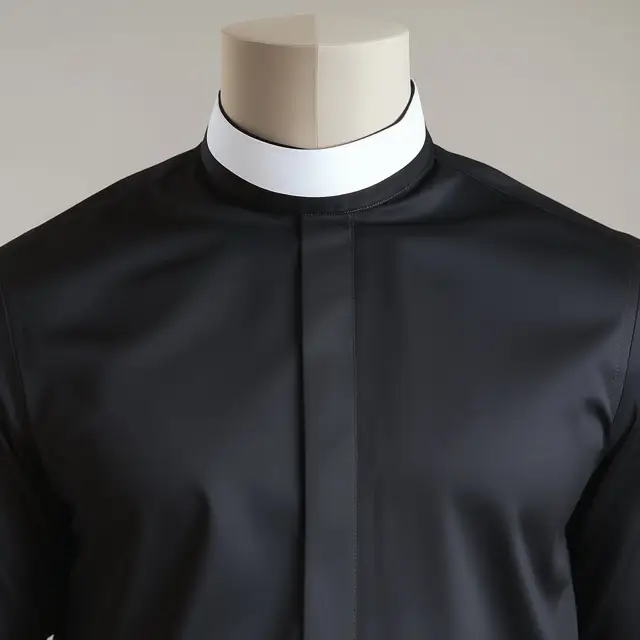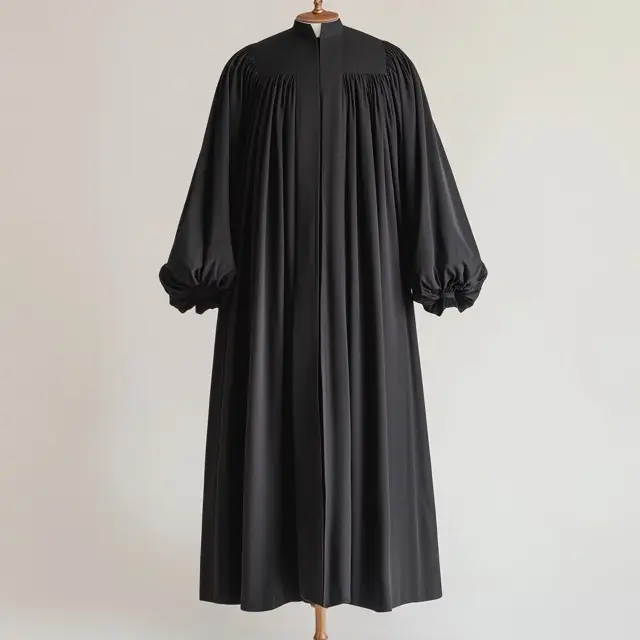
In centuries past, it was common for people to wear clothing that identified their occupation. A blacksmith might don a leather apron, a soldier a uniform, and a judge a robe. In a similar way, preachers have historically worn distinctive attire to signify their role and calling. These garments are not meant to elevate the man but to emphasize the office he occupies—a minister of the oracles of God, an ambassador for Christ (2 Corinthians 5:20), and a scholar of sacred Scripture. While these vestments are not prescribed in Scripture, they serve as meaningful historical practices that remind us of the dignity and solemnity of gospel ministry.

It is important to remember that beneath these garments, the preacher is dressed in ordinary business attire. This underscores the truth that preachers are ordinary men called to an extraordinary task. Their vocational clothing does not make them holier than others; it simply serves as a visual reminder of their sacred office and the solemn responsibility entrusted to them.
This balance between ordinary dress and ceremonial vestments reflects a key Reformed principle: while we affirm the special office of minister, we reject any notion of a separate priestly class. The minister’s authority comes not from his garments but from his calling to faithfully proclaim God’s Word. As the Reformers taught, all believers are priests before God (1 Peter 2:9), yet God has ordained that some should be set apart for the public ministry of the Word and sacraments.

The clergy shirt, typically black, serves as a simple and dignified base for the preacher’s attire. Its unadorned design reflects humility and a focus on the message rather than the messenger. The band collar, often white, is a distinctive feature of the clergy shirt. This style originated from 19th-century clerical dress, with its simplicity symbolizing separation from worldly fashions and a commitment to sacred service. This practical design helps minimize distractions during worship, allowing the congregation to focus more fully on the Word being proclaimed.
Despite common misconceptions, the clerical collar is not a Roman Catholic invention but emerged from Protestant circles in the 19th century. The modern form was developed by the Presbyterian minister Donald McLeod in 1865, and it was widely adopted by Protestant clergy across Anglican, Lutheran, Methodist, and Reformed traditions. Its popularity grew as a practical alternative to the more elaborate neckwear of the time, embodying Protestant principles of simplicity while maintaining the dignity of the ministerial office.

Preaching bands, the two strips of white fabric hanging from the collar, have their roots in 17th-century academic dress. They were originally worn by scholars and professors to denote their learned status. For the preacher, these bands signify the scholarly study of Scripture and the theological training that equips him to rightly divide the word of truth (2 Timothy 2:15). They serve as a visible reminder that careful study and preparation are essential to the ministry of the Word.

The Geneva gown, a black robe with flowing sleeves, is named after the Reformation city of Geneva, where John Calvin and his colleagues made it a standard garment for ministers. It is derived from academic robes worn by professors in medieval universities. Today, we continue to see robes like this worn as part of academic dress, most often during commencements and graduations. By wearing the Geneva gown, the preacher emphasizes that his role is not to proclaim his own ideas but to expound the Scriptures. This practice varies among Reformed churches, with some preferring simpler attire while maintaining the same principles of dignity and focus on God’s Word.

The stole, a long, narrow strip of cloth worn over the shoulders, is one of the oldest symbols of Christian ministry, dating back to the early church. It represents the yoke of Christ and the authority to proclaim the Gospel and administer the sacraments. While its use varies among traditions, in Reformed churches, the stole is often worn during worship services to signify the preacher’s role as a servant of God’s people and minister of the sacraments. Some Reformed congregations choose not to use the stole, emphasizing simplicity while maintaining other aspects of traditional ministerial dress.
The attire of Protestant ministers has undergone significant changes since the Reformation. While the Geneva gown represented a decisive break from elaborate Roman Catholic vestments, the 19th and early 20th centuries saw many ministers adopt the professional business suit as their standard attire. This shift reflected both the minister’s role as a learned professional in society and the Protestant emphasis on the priesthood of all believers. In recent decades, many churches have moved toward increasingly casual ministerial dress, with some pastors preferring jeans and casual shirts. This trend often aims to make church more approachable and remove perceived barriers between clergy and congregation.
The preacher’s attire reflects the high calling of proclaiming God’s Word. Each element—the clergy shirt, band collar, preaching bands, Geneva gown, and stole—has a historical origin and a symbolic meaning that underscores the seriousness of the task and the dignity of the office. When a preacher steps into the pulpit clothed in this attire, he visibly sets himself apart, not to elevate himself, but to focus the congregation’s attention on the God who speaks through His Word.
These vestments serve a practical purpose as well, helping to minimize distractions and maintain focus on the message rather than the messenger. They remind both preacher and congregation that the ministry of the Word is not a casual undertaking but a sacred trust requiring reverence and careful attention.
At Pilgrim International Church, we honor these traditions not as mere formalities but as reminders of the weighty privilege of heralding the Gospel and shepherding God’s people. While we recognize that such practices are not binding on all churches, we find them valuable aids in maintaining the dignity and focus of worship, always remembering that our ultimate authority comes not from human traditions but from the Word of God itself.